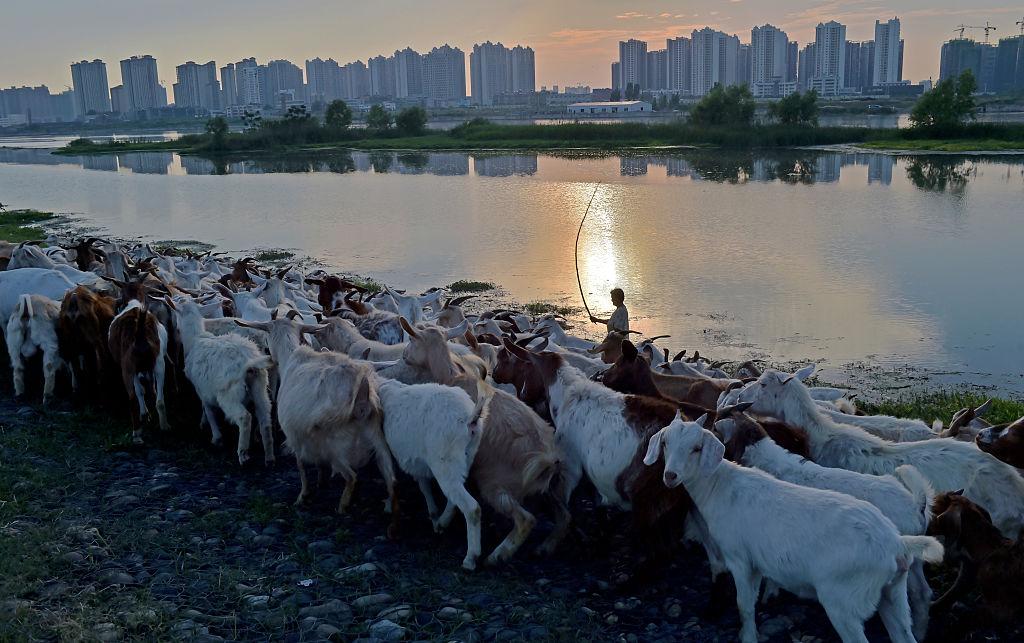From the bookshelf: ‘Invisible China: how the urban–rural divide threatens China’s rise’
Posted By Robert Wihtol on July 7, 2021 @ 06:00

Whenever Scott Rozelle visits a Chinese village, he offers his students a small reward if they can find a healthy male aged 18 to 40. They seldom succeed, because most working-age men and many women have migrated to cities for employment, leaving their children to be brought up by their grandparents and educated in the local school. The parents return to the village annually for the Lunar New Year festival but play a minimal role in their children’s upbringing. It’s a sad and all too common story affecting more than 100 million Chinese households.
The literature predicting China’s decline tends to focus on its authoritarian politics [1] and problems in the macroeconomy [2]. Rozelle, a professor at Stanford University who has been studying rural China for four decades, and Natalie Hell, a member of his research team, take a different tack. Their fresh book, Invisible China [3], focuses on an issue that has received little attention, China’s vast, isolated and long-neglected rural population. As the authors see it, the rural challenge has ‘remained invisible for too long, not only to the outside world but also to many Chinese’.
Rozelle and Hell present a stark assessment of China’s human capital. China’s urban workforce, the driver of the country’s spectacular growth, comes mainly from rural areas. Basic skills were sufficient to move China quickly from poverty to middle-income status. But China’s workers are ill-equipped for the next stage of the country’s growth trajectory.
China’s household registration (hukou) system, which strictly separates the urban and rural populations, prevents rural migrants from settling in cities and getting a high-quality education for their children. The burden for educating China’s workforce falls on the country’s rural schools, which are generally of low quality.
As a result, China is teetering on the brink of the ‘middle-income trap’. Beating the trap is no mean feat. Of the 101 countries that were considered middle income in 1960, half a century later only 13 had become high income. The ‘graduates’ include Ireland, Portugal, Spain, the Asian ‘tigers’ (Hong Kong, Singapore, South Korea and Taiwan) and a few Eastern European countries. Brazil, Malaysia, Thailand and many others failed to make the cut.
What’s the key to moving up? According to Rozelle and Hell, it’s having a labour force with at least a high-school education that gives workers the skills to move between jobs. No country has made it to high-income status with high-school attainment below 50%. When South Korea and Taiwan moved up, their high-school graduates were already on a par with those in rich countries. In contrast, China has high-school attainment of slightly over 30%.
There’s a lot of hype about China’s educational excellence, from Shanghai’s 15-year-olds winning the 2012 international PISA test to the notorious ‘tiger mothers’ who push their children through China’s gruelling university entrance exams. Rozelle and Hell remind us that this is only half the story. China’s coastal cities are a world apart from its rural areas, which have suffered chronic underinvestment in education.
The authors trace the roots of the problem to China’s recent history. Mao Zedong established the hukou system in the 1950s and actually worked against the accumulation of human capital. During the Cultural Revolution, from 1966 to 1976, all universities and most academic high schools were closed, and highly educated people were humiliated or persecuted. Mao’s Little Red Book was often the only available text.
Deng Xiaoping opened the universities and recognised the need to learn from other countries, but it was only under Jiang Zemin and Hu Jintao that education received attention. Surprisingly, China only recognised education as a public good in the early 2000s, when tuition fees for compulsory schooling (the first nine years) were abolished. Prior to that, the rural population was at a huge disadvantage. Even now, academic high schools charge tuition. The authors welcome recent policy shifts, but they may be too little, too late.
The urban–rural divide persists to this day. Over 60% of China’s population lives in cities, but only 36% has urban hukou. Other urban dwellers—over 300 million strong—work and live in a grey area. Despite nearly two decades of policy pronouncements, cities and municipalities have paid only lip service to relaxing the hukou system. They are simply unwilling to take on the fiscal burden of paying rural migrants’ social benefits and educating their children. Unless the issue is addressed, China’s future workforce will continue to be educated in poor-quality rural schools.
Rozelle and Hell would like to see China succeed, and remind us how important this is for the whole world. But they are concerned with the slow progress in reforming education. China has recently become more authoritarian, limiting cooperation with the education systems of other countries and even restricting the foreign books [4] that children can read. Invisible China sounds a wake-up call.
Article printed from The Strategist: https://aspistrategist.ru
URL to article: /from-the-bookshelf-invisible-china-how-the-urban-rural-divide-threatens-chinas-rise/
URLs in this post:
[1] authoritarian politics: https://www.wiley.com/en-us/China%27s+Future-p-9781509507146
[2] problems in the macroeconomy: https://georgemagnus.com/tag/red-flags/
[3] Invisible China: https://press.uchicago.edu/ucp/books/book/chicago/I/bo61544815.html
[4] restricting the foreign books: https://www.ft.com/content/0e4f68be-056a-11e7-ace0-1ce02ef0def9
Click here to print.